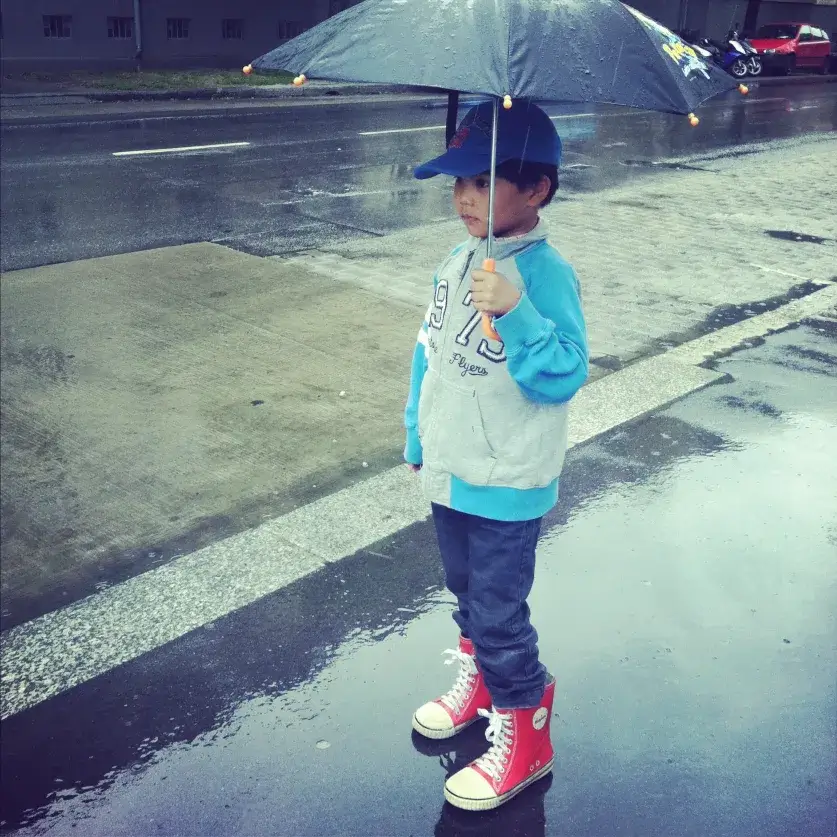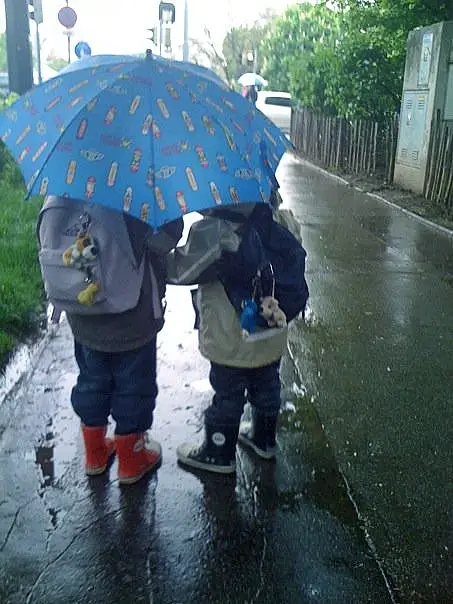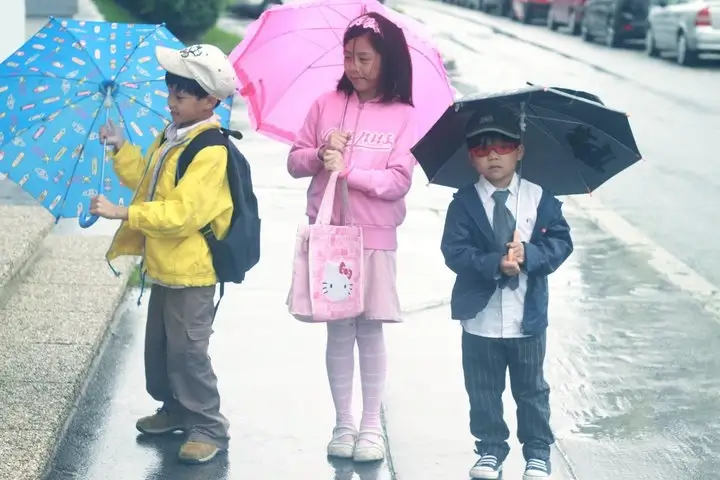
Of Umbrellas, Raincoats, and Rainboots : To Each an Umbrella
Rainy days often bring to mind thoughts of staying indoors and cozying up with a good book or movie. However, the rain can also provide a unique and thrilling opportunity for children to explore and have fun in ways they might not experience on a sunny day. In this article, we will delve into the wonders of kids having fun in the rain, exploring the joy, creativity, and memorable moments that come with embracing the wet weather.

Of Umbrellas, Raincoats, and Rainboots : Rain-ready
Table of Contents
Fun Things To Do In the Rain
Splashing in Puddles:
One of the most iconic and enjoyable activities for children during rainy days is splashing in puddles. Armed with rain boots and colorful umbrellas, kids can let loose and jump with gleeful abandon, creating a splash that sends droplets dancing in all directions. This simple act of stomping in puddles not only brings immense joy but also encourages physical activity and sensory exploration.
Rainy Nature Walks:
The rain transforms familiar surroundings into a whole new world of sights, sounds, and scents. Encourage children to put on their raincoats and take a stroll through the neighborhood or nearby park, observing how the rain changes the landscape. They can listen to the rhythmic patter of raindrops on leaves, watch as tiny rivers form on the streets, and discover new colors and textures in the environment.
Building Rainy Day Forts:
Rainy days provide the perfect opportunity for indoor creativity. Children can build forts out of blankets, chairs, and other household items, transforming their living room or bedroom into a cozy hideaway. The sound of raindrops hitting the windows adds an extra layer of ambiance to their imaginative adventures. Whether it’s reading books, playing board games, or simply having a picnic inside the fort, these rainy day retreats create lasting memories.
Rain Art:
The rain can be an artist’s canvas waiting to be explored. Children can take their creativity outside and use the rain as their paintbrush. They can draw pictures or write messages on the ground with chalk and watch as the rain transforms their artwork into watercolor masterpieces. Experimenting with different materials, such as watercolor paints or food coloring mixed with water, can add an extra element of good fun to their rainy day creations.

Of Umbrellas, Raincoats, and Rainboots : Fully-geared
Singing and Dancing in the Rain:
There’s something undeniably magical about dancing and singing in the rain. Encourage children to let go of their inhibitions and embrace the joy of precipitation. Whether it’s twirling with arms outstretched or belting out their favorite tunes, these moments create a sense of freedom and uninhibited expression that can be truly uplifting.
Rainy Science Experiments:
Rainy days provide a unique opportunity to explore scientific concepts with hands-on experiments. Children can learn about the water cycle by setting up a mini water cycle experiment or create their own rain gauges to measure rainfall. Exploring the properties of water, observing how raindrops behave on different surfaces, or investigating the science behind rainbows can turn a drizzly day into an educational adventure.
While rainy days may initially be seen as a hindrance to outdoor fun, they can actually offer an abundance of exciting opportunities for children. From splashing in puddles and building forts to engaging in creative arts and scientific experiments, embracing the rain allows kids to tap into their imagination, explore the wonders of nature, and create cherished memories. So, the next time the rain starts to fall, encourage the kids to grab their rain gear and embark on an adventure that they will remember for years to come.

Of Umbrellas, Raincoats, and Rainboots : Cutie boots
Dress Kids when Raining to Avoid Getting Sick
When dressing kids for rainy weather, it’s essential to consider their health and well-being. While getting wet in the rain does not directly cause illness, prolonged exposure to cold and damp conditions can potentially weaken the immune system. Here are some tips to help dress your children appropriately to minimize the risk of getting sick:
Layer Up: Dress your child in multiple layers of clothing. Start with a lightweight, moisture-wicking base layer made of materials like cotton or synthetic fabrics. This layer will help keep them dry by drawing moisture away from their skin. Add a lightweight sweater or fleece for insulation and a waterproof outer layer, such as a raincoat, to protect them from rain and wind.
Cover Extremities: Ensure your child’s head, hands, and feet are adequately protected from the rain. Use a waterproof hooded jacket or a hat with a brim to shield their head and face. Provide waterproof gloves or mittens to keep their hands dry and warm. Invest in waterproof boots or rain boots with proper insulation and ensure they are wearing warm, moisture-wicking socks.
Choose Breathable Fabrics: Opt for clothing made from breathable materials that allow moisture to escape while keeping your child comfortable. Avoid dressing them in heavy, non-breathable fabrics as they may lead to overheating and excessive sweating, which can make them more susceptible to getting sick.
Avoid Dampness: If your child gets wet, it’s crucial to change their clothes as soon as possible. Wet clothing can rapidly cool down the body and potentially lead to discomfort and illness. Pack an extra set of dry clothes in a waterproof bag or backpack to have on hand in case they need to change.
Keep Feet Dry: Wet feet can be particularly uncomfortable and increase the risk of catching a cold. Make sure your child wears waterproof boots or shoes with good traction to prevent water from seeping in. Ensure they have clean, dry socks to wear, and consider packing an extra pair in case they need to change.
Maintain Body Heat: Pay attention to your child’s body temperature during rainy weather. Dress them appropriately for the temperature, ensuring they stay warm without overheating. Adjust their layers accordingly, removing or adding clothing as needed.
Stay Hydrated: While it may not be directly related to dressing for rainy weather, it’s important to remind your child to stay hydrated. Drinking plenty of fluids helps support a healthy immune system and overall well-being.

Of Umbrellas, Raincoats, and Rainboots : Dance a bit
Remember, while dressing appropriately for rainy weather is important, it’s also crucial to practice good hygiene habits, such as regular handwashing, to minimize the risk of illness. With proper clothing and sensible precautions, your child can enjoy the rainy weather while reducing the likelihood of getting sick.

